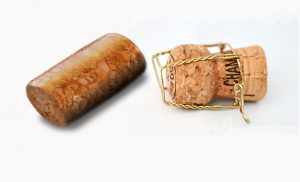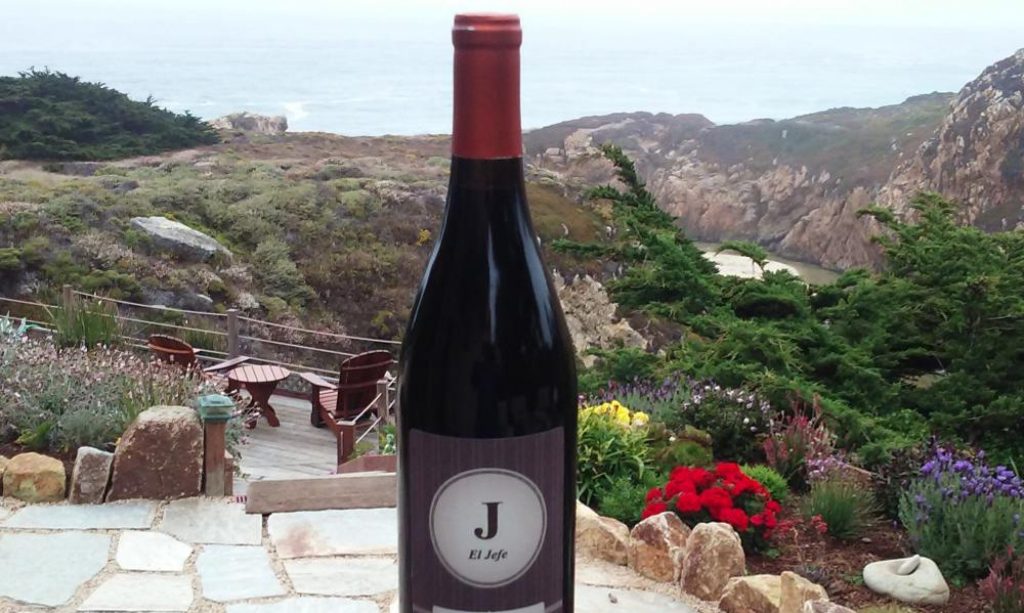What’s your preferred categorization – red and white? For us, we take it up a level from there – still wines and sparkling wines are the place to start!When you see “types of wine” do you think, there are two types, red and white? Perhaps that’s one way to think about it, but what about rosé – is it “red, light?” (Rosé [pronounce it row-ZAY] is actually made from red wine grape juice, of any kind. Extracting the juice from the skin relatively quickly leaves just a light pinkish color in the juice. And, the french word for “pink” is…rosé!)
I think it’s much more interesting to think about types of wine at an even more basic level – still and sparkling.
Types of wine – wine basics.
Everyone knows, it’s juice from wine grapes that makes wine. Common to all wines is at least one fermentation. During fermentation, yeast feeds on the sugars around them, such as the natural sugars in the juice. To relate to human digestion, the yeast “pee” alcohol and “fart” carbon dioxide as they digest the sugars. They die when there are no more sugars to eat, or when the alcohol level is too high. (Sounds like the tragic story of some degenerate party animals, doesn’t it?) Without the yeast producing alcohol from the fermentation, it’s not wine, it’s just grape juice.
The yeast can be either the natural yeast in the vineyard, or cultivated strains added by the winemaker. Wild yeast from the environment can produce some really interesting flavors, but sometimes “interesting” may not be wonderful. With cultivated strains, there’s more consistency.
Regardless of what varietal the winemaker starts with, the choice in types of wine to make is – bubbles or not, sparkling or still?
Still wines.
Still wines are bottled after all fermentation is complete. Simple. Red, white, or rosé, the winemaker wants the yeast to have finished its work before it goes in the bottle. (It can be pretty disastrous if the yeast is still active, particularly if it’s still producing carbon dioxide. Still wine corks are not supposed to go “pop!”)
Sparkling wines.
Sparkling wines are bottled specifically to capture a fermentation by product – carbon dioxide. The lovely bubbles in a sparkling wine (or your favorite beer, for that matter) are the fermentation by product, carbon dioxide, trapped in the bottle. (You can also introduce the carbon dioxide directly, as you would with a soft drink, but, from my perspective, it’s a cheat. But, it’s also very inexpensive, so, there’s the trade-off.)
Sparkling wines traditionally have been produced from white grape juice, generally chardonnay. However, in a new wave of “let’s throw out the rules,” winemakers are experimenting with bubbling up red varietals, too.
Secondary fermentation in still and sparkling wines.
Of note – winemakers can, and often do, use more than one fermentation for still and sparkling wines. In previous posts, I mentioned a particular popular secondary fermentation used in still wine production, called malolactic fermentation. (“What should Chardonnay wine taste like?“) Malolactic fermentation smooths out a wine, by using a yeast to convert apple-like malic acid to softer, more buttery lactic acid.
A winemaker can also use secondary fermentation on a still wine if the first fermentation petered out before the alcohol or sugar level is acceptable. Also, sometimes a wine being fermented is transferred from maybe a large vat to an oak barre. This is sometimes called a secondary fermentation, but it’s actually just a continuation of the primary fermentation in a new vessel.
Sparkling wine makers often (but not always) use secondary fermentation specifically to make bubbles, by adding additional sugar and yeast to a wine that has completed it’s primary fermentation. The additional sugar and yeast can be added to a tank or vat of wine, and then bottled (like a prosecco), or, it can be added directly to the bottle (the renowned “méthode champenoise,” “the method of Champagne.”)
The practice originated in the Champagne region of France, renowned for the finest sparkling wines. (The term Champagne is actually a trademark for sparkling wines produced by the méthode champenoise from the Champagne region. There are a few exemptions, however. Some wineries which had been producing a sparkling wine and labeling it as Champagne before the trademark was granted are exempt, and can label their sparkling offerings as champagne.)
A sparkling revival – méthode ancestral
I mentioned most sparkling wines (or Champagnes) use some form of secondary fermentation to make bubbles. An even earlier, more “rustic” if you will, method is to bottle before primary fermentation is complete, the “méthode ancestral.” (method of the ancestors, ancient method) Not dissimilar to your favorite craft beer, the carbon dioxide produced by the yeast in primary fermentation is trapped in the bottle. This style is showing up more and more, often called “pétillant naturel, ” (natural sparkling, pronounce it “petty-OWN na-chur-EL) or simply “pét-nat.”
The “pét-nat” I had was a much lighter, refreshing style of sparkling, a much different experience than a deep and yeasty Schramsberg, for instance.
I love sparklings (all right, I confess, I love them all!) For your inner wine geek, Wine Folly did a good piece on all the different techniques for sparkling wine production: https://winefolly.com/review/how-sparkling-wine-is-made/
Hope you find this little background on types of wine useful. For me, I think knowing what’s gone in to the production of an offering gives me a greater appreciation for what I’m experiencing. I also find wine tasting staff often enjoy sharing a little more about the winery, the winemaker and its wines if you have a little knowledge (and if they’re not too busy!) Part of the wine tasting experience for me is being out and having the opportunity to interact with people, too – hope it becomes a fun part of your experience, too!
…and speaking of wine tasting, did you know you can save big bucks on tastings in California, Washington and Oregon? 🙂
Tell me more! I want to save money on wine tastings!


